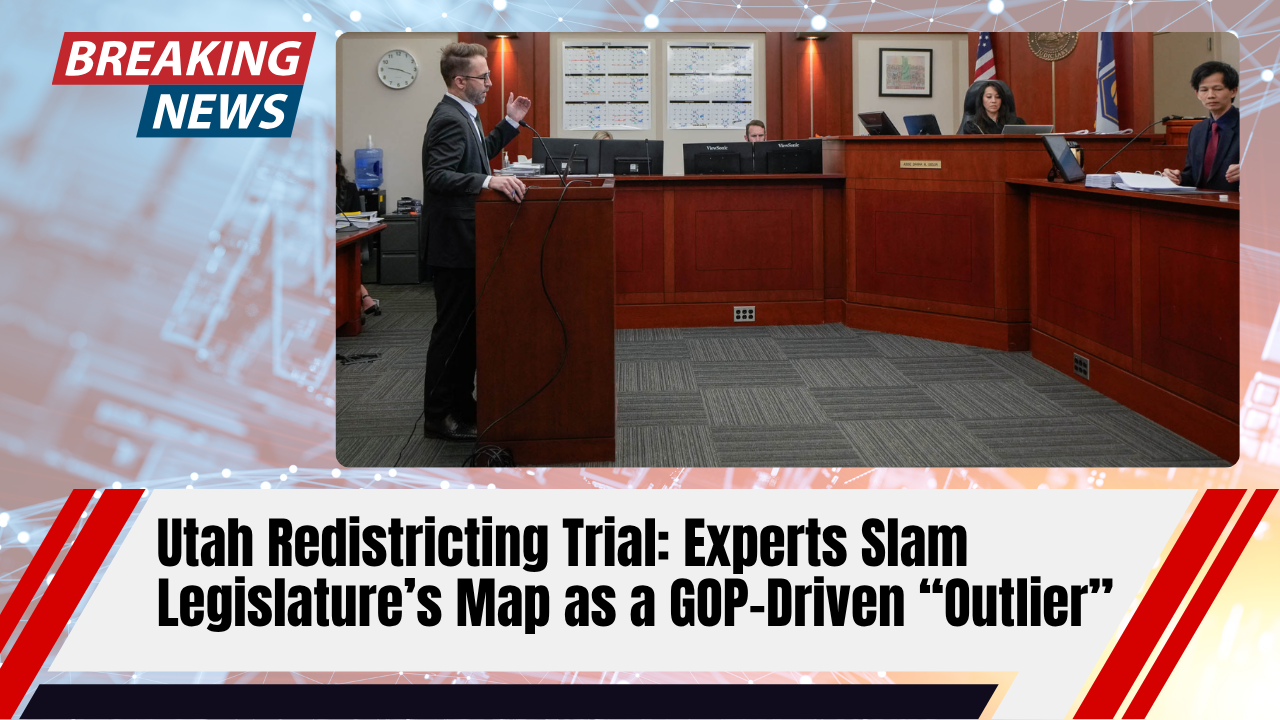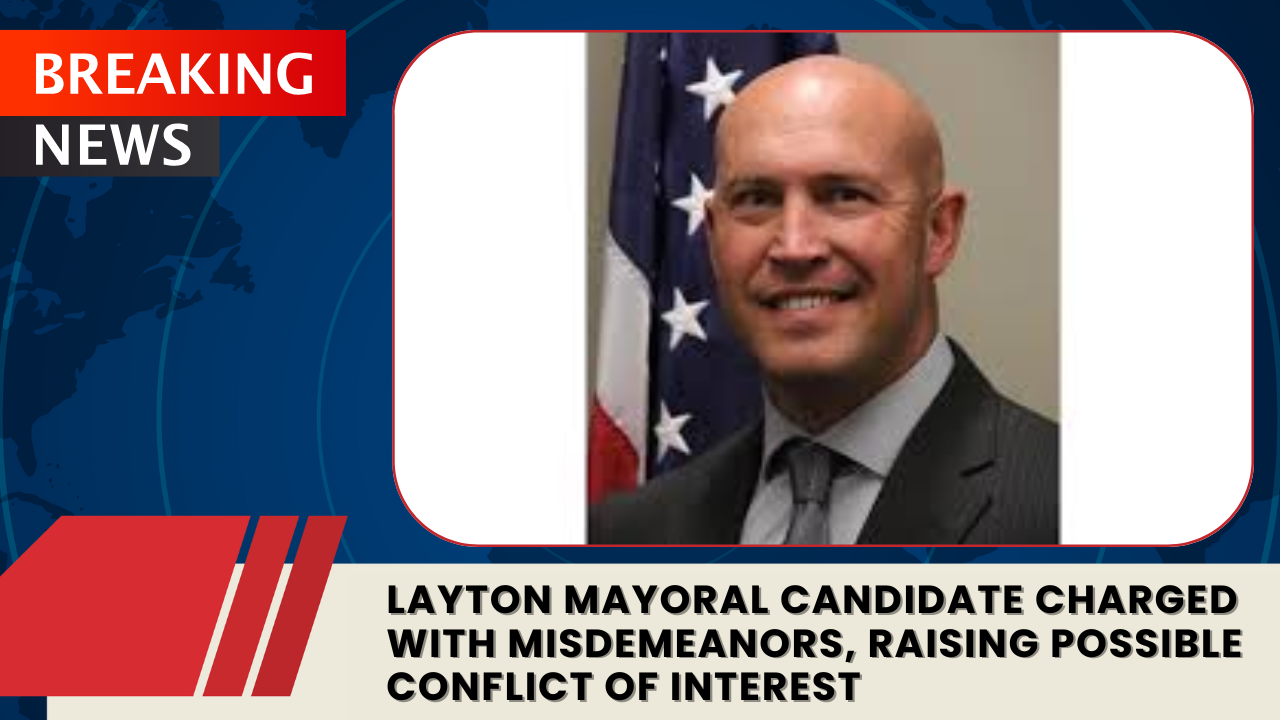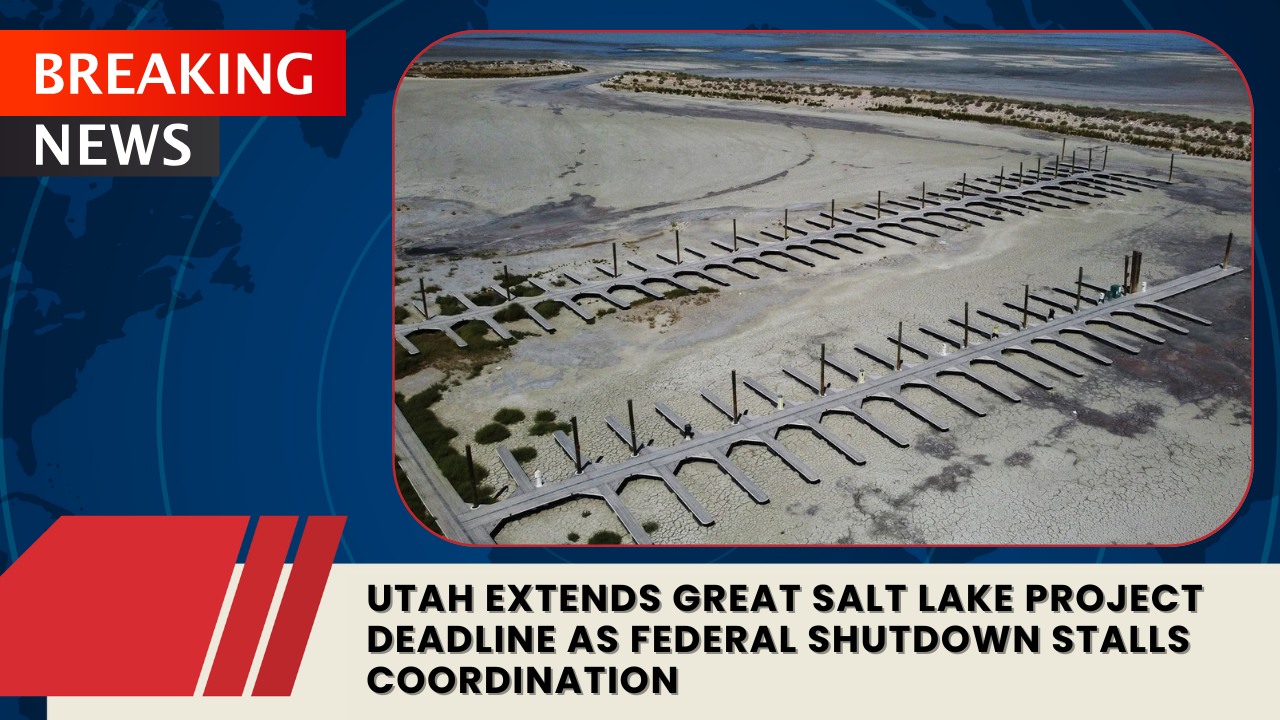A heated courtroom debate unfolded in Salt Lake City this week as experts accused Utah lawmakers of drawing a congressional map that heavily favors Republicans — potentially violating the state’s own voter-approved redistricting standards.
Expert Analysis Points to Strong GOP Bias
Two political science professors testified that the new congressional boundaries, approved by Utah’s Republican-controlled Legislature, all but guarantee four safe Republican seats.
Dr. Jowei Chen of the University of Michigan generated 10,000 algorithmic maps using neutral redistricting criteria. His findings revealed that over 99% of the simulated maps produced at least one Democrat-leaning district — while the Legislature’s version did not produce any.
Chen called the official map an “extreme partisan outlier” that divides Democratic voters across multiple districts, effectively weakening their influence.
Chris Warshaw, a Georgetown University professor, supported those findings. His analysis concluded that the Legislature’s map “unduly favors the Republican Party,” while alternative maps proposed by the plaintiffs were politically neutral.
Proposition 4 and the Legal Challenge
The case stems from Proposition 4 (Better Boundaries), a 2018 ballot initiative designed to create fair, nonpartisan districting in Utah. The Legislature later repealed key parts of that initiative, prompting lawsuits from the League of Women Voters, Mormon Women for Ethical Government, and several Utah residents.
In 2023, the Utah Supreme Court ruled that repealing Proposition 4 was unconstitutional. Following that decision, Judge Dianna Gibson ordered lawmakers to draw a compliant map. She is now tasked with choosing between three options — one from the Legislature and two proposed by the plaintiffs — by November 10, 2025, ahead of preparations for the 2026 midterm elections.
Criticism Over “Cracked” Districts and County Splits
Dr. Chen testified that the Legislature’s map “cracked” Democratic strongholds by splitting urban voters into multiple districts — a strategy that ensures consistent Republican dominance.
He also criticized the Legislature’s expert witnesses, Sean Trende and Michael Barber, for creating computer models that ignored basic redistricting principles like compactness and keeping counties intact. According to Chen, while his maps split a maximum of three counties, more than half of Trende’s maps split at least seven — some as many as 13.
The “Utah Paradox” in Gerrymandering Tests
Professor Warshaw highlighted what he called the “Utah paradox” — a flaw in the redistricting tests chosen by lawmakers. Under the Legislature’s preferred metrics, even maps favoring Democrats appear to fail the fairness test, while Republican-favored maps pass.
He noted that other measures, like the efficiency gap, could provide a more accurate assessment of partisan bias, though they weren’t used by the Legislature.
Citizens’ Voices and Political Fallout
Plaintiffs Malcolm and Victoria Reid of Millcreek testified that the gerrymandered map left them feeling politically powerless. Their city, once split into four districts, remains divided under the current plan.
Meanwhile, the Utah Republican Party has launched an “indirect initiative” to repeal Proposition 4 entirely, though it canceled several planned hearings as of late Friday.
What Happens Next
The court will continue hearing testimony from the Legislature’s experts before Judge Gibson issues her ruling in early November. Her decision will determine whether Utah voters regain the fair representation promised under Proposition 4 — or whether the GOP-favored map stands for another election cycle.



